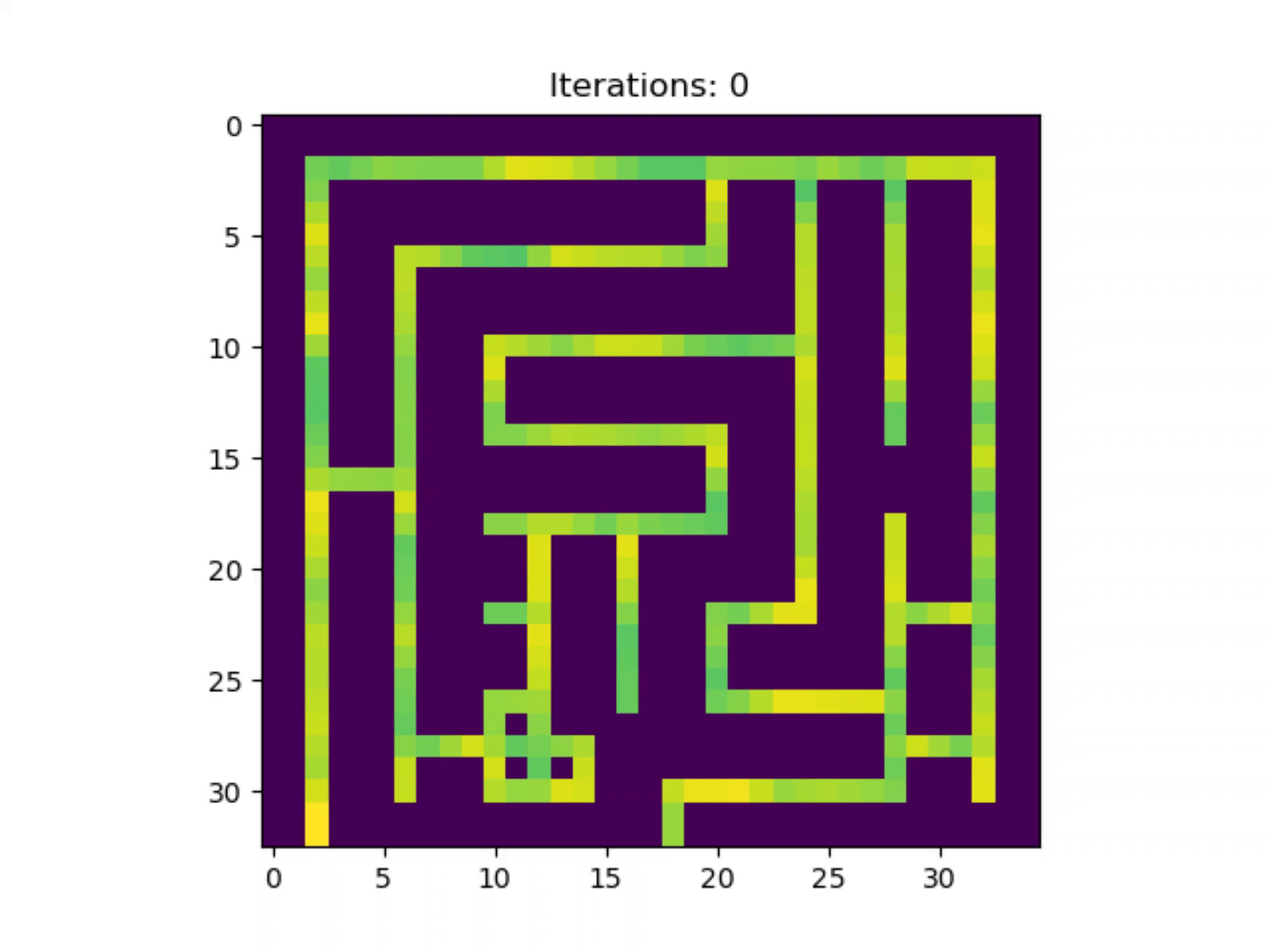This project is an implementation of a paper by Atsushi Tero, Ryo Kobayashi and Toshiyuki Nakagaki[1].
This current-reinforcement based model, inspired by the Physarum Polycephalum slime mold, lets you solve mazes and find optimal networks.
In the notebook you can:
- specify various constants (time step delta, the function f used to calculate the derivative (defaults to Q^mu), number of simulation steps, etc.)
- specify a graph to run the model on by providing the distance matrix
- specify a maze to solve by providing the maze in graphical format, and using the provided helper function to convert it to a distance matrix Then, the model can be run and, in case you are using a maze, the solution can be plotted.
The python file solves mazes in the same way as the notebook. Running it with matplotlib and numpy installed will solve the given maze and will display and update the state of the physarum in the maze every ten iterations.
Final note: tqdm is used to show the progress of the simulation.
[1] Atsushi Tero, Ryo Kobayashi, Toshiyuki Nakagaki, A mathematical model for adaptive transport network in path finding by true slime mold, Journal of Theoretical Biology, Volume 244, Issue 4, 2007, Pages 553-564
